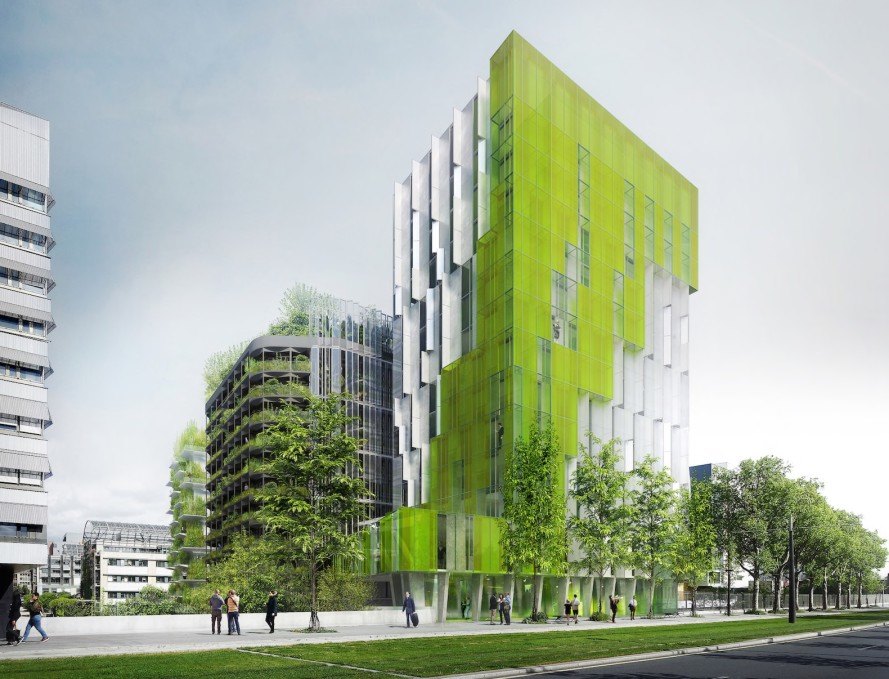The Parisian 13th district has been reimagined as a sustainable ecosystem with the use of space technology. Designed by XTU Architects and its partners from the SymBIO2consortium, the complex of three green eco-conscious buildings has its place amongst the 23 winning proposals of the Réinventer Paris competition.
The “In Vivo” project explores how to create the “Paris of tomorrow” through a resilient architecture. The design features urban greenhouses, vertical forests, and solar-powered algae bio facade, all three in a multi-purpose building block. The 2,869 sq metre site is currently under development in the La Rive Gauche district paving the way for innovative urban development featuring the eye-catching green-coloured bio facade. By introducing the algae-covered exterior into urban development, the architects utilised the significant potential of space technologies and systems.
One of the key elements of this environment cautious urban design is the application of ESA’s Micro-Ecological Life Support System Alternative (MELiSSA). The intensified MELiSSA regenerative technologies were perfectly adapted to become a highly productive photobioreactor (biological solar collector) and to form the actual facade of the building.

in Paris. Image Credit: XTU Architects / MU Architecture
The new generation facades made with microalgae
The “In Vivo” project comprises of three buildings: the Tree House, a structure planted with mature trees that will contain flats with individual balconies filled with greenery; the Plant House, dedicated to urban farming will consist of flats and a large terrace where residents will be encouraged to grow their food; and the Algo House, which will be coated with a bio facade and provide accommodation for students and young researchers of the Sorbonne University.
The major innovation – the new generation bio facade – is featured in the Algo House. The photobioreactors integrated into the front of the building maximise the use of solar flux for both microalgae cultures and temperature regulation. This reduces the water consumption for algae culture by nearly 90% compared to classic open-pond cultures and will allow the cultivation, within biological solar collectors of microalgae, with high added value for medical research. The bio facade will also allow to utilise the heat captured by the photobioreactors and use it for domestic hot water and heating.
The “In Vivo” project demonstrates the potential and practicability of space technologies for urban innovation and sustainable architecture. In providing the innovative solution in the environment-conscious urban development and resilient building design, the space technologies assist with making the cities more eco-friendly and greener places to live. By doing so, the space exploration contributes towards the achievement of the 2030 Sustainable Development agenda, in this case to SDG11 Sustainable cities and communities.







